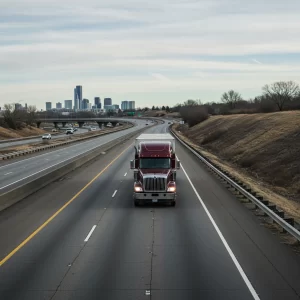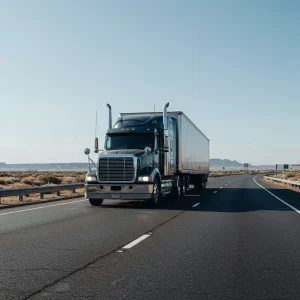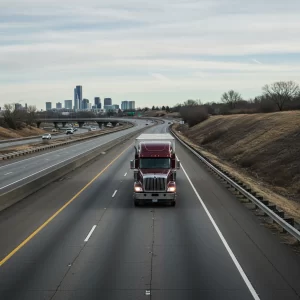
Can My Truck Be Impounded for Clean Truck Check Violations?
Can My Truck Be Impounded for Clean Truck Check Violations?
The duration of a Clean Truck Check inspection depends on multiple factors, including vehicle type, emissions systems, and inspection readiness. Typically, a standard inspection under California’s Clean Truck Check Heavy-Duty Inspection and Maintenance Program (HD I/M) takes approximately 30 to 60 minutes per vehicle when all systems are accessible and in compliance. Administered by the California Air Resources Board (CARB), this program ensures that heavy-duty vehicles such as trucks, buses, and motorhomes with a gross vehicle weight rating (GVWR) over 14,000 pounds meet emissions inspection requirements. The inspection involves emissions testing, visual and functional inspections, and verification of onboard diagnostics (OBD) data. The process is essential for maintaining environmental compliance, preventing non-compliance penalties, and supporting emissions reduction programs across California.

During the inspection, technicians conduct a series of evaluations to ensure vehicles meet CARB’s emissions testing and reporting requirements. The process includes a smoke opacity test using equipment compatible with SAE J1667, a visual and functional inspection of emissions control systems, and review of the Emissions Control Label. Vehicles must also pass onboard diagnostics (OBD) scans using certified testing facilities or continuously connected OBD scan tools. Data is submitted to the compliance database, and upon passing, vehicles receive a certificate of compliance. If a vehicle fails, a Notice to Submit to Testing may be issued, and the owner must perform proof of correction before the registration expiration date. The inspection also ensures there are no tampering violations or refuse inspection violations, maintaining the integrity of California’s emissions reduction program. Learn more about Clean Truck Check In Hayfield, CA .
Several elements influence inspection duration, including the vehicle identification number (VIN) matching process, system accessibility, DMV registration status, and whether emissions-related recalls have been addressed. Heavy-duty diesel vehicles often take longer due to additional smoke opacity tests and emissions monitoring requirements. Vehicles equipped with alternative fuel systems or zero-emissions technology may undergo modified testing. Delays can occur if aftermarket parts are installed without proper certification, if telecommunication systems for data submission are unresponsive, or if non-continuously connected OBD scan tools require manual data upload. The overall time also depends on technician experience, equipment condition, and whether testing is done at a certified facility or through roadside emissions monitoring. Learn more about Clean Truck Check In Henshaw, CA .
For in-state fleets registered with CARB, inspections generally take 30 to 45 minutes, as vehicle data is already stored in the compliance database, streamlining the testing and reporting requirements. Out-of-state vehicles operating in California must first register vehicles with CARB, verify compliance fee payment, and provide fleet information before testing can begin, often extending inspection time to 45 to 60 minutes. Delays are also possible if out-of-state trucks lack previous compliance testing records or face emissions control label discrepancies. Both categories must adhere to compliance deadlines and pay the annual compliance fee to maintain operational status and avoid civil penalties, registration blocks, or vehicle impoundment for non-compliance. Learn more about Clean Truck Check In Hidden Palms, CA .
Proper preparation significantly reduces inspection time and helps meet compliance test deadlines. Fleet owners should identify applicable vehicles, verify emissions control components, and ensure all emissions systems are functioning. Keeping up with preventive maintenance, early detection of issues, and training authorized testers can prevent unexpected delays. Operators should collect and organize fleet information, submit fleet and owner data ahead of schedule, and ensure emissions diagnostics reports are accurate. Maintaining records of previous compliance tests, proof of correction, and emissions-related recalls ensures smooth verification. Using certified testing equipment and telecommunication tools helps meet ongoing testing requirements and avoids non-compliance enforcement actions. Learn more about Clean Truck Check In Highgrove, CA .
Modern telematics devices and diagnostic tools play a crucial role in reducing inspection time. Continuously connected OBD scan tools and telecommunications-based emission inspection tools provide real-time emissions data submission, eliminating manual steps. These systems monitor engine performance, detect faults early, and generate emissions diagnostics reports aligned with CARB standards. T-harness connections and portable emission acquisition systems allow efficient data collection and smoke opacity test execution. Incorporating emissions monitoring into daily operations enables continuous compliance monitoring, minimizes downtime, and enhances operational efficiency, while supporting California’s mission for cleaner air and sustainable operations. Learn more about Clean Truck Check In Highland Springs, CA .
The California Air Resources Board enforces strict compliance deadlines tied to registration expiration dates. Fleets must conduct periodic compliance testing, pay compliance fees, and maintain valid certificates of compliance. Missing deadlines can result in civil penalties, citations, and registration blocks. Integrating inspection time into your testing plan ensures vehicles are available for compliance testing without disrupting operations. CARB also uses roadside emissions monitoring to detect high-emitting vehicles, which may trigger a Notice to Submit to Testing. Proper scheduling ensures compliance test deadlines are met, minimizing risks of non-compliance enforcement actions and lost operational time. Learn more about Clean Truck Check In Hinda, CA .
Clean Truck Check’s Truck Check Up offers a comprehensive solution for fleets aiming to comply with the Clean Truck Check Heavy-Duty I/M Program efficiently. It integrates OBD systems, emission inspection tools, and telematics for continuous monitoring. The platform automates emissions data submission, provides instant emissions diagnostics reports, and ensures adherence to testing and reporting requirements. By utilizing this technology, fleets can complete inspections faster, reduce risk of downtime, and avoid non-compliance penalties. The system enhances preventive maintenance, supports emissions reduction programs, and provides proof of correction when needed. Adopting Truck Check Up not only ensures compliance but also improves air quality, reduces smog-causing pollution, and supports sustainable operations. Learn more about Clean Truck Check In Holcomb Village, CA .
Most fleets ask how inspection time aligns with CARB’s compliance testing. On average, inspections last 30–60 minutes, depending on vehicle readiness, equipment availability, and testing facility efficiency. Vehicles with emissions-related recalls or missing compliance records may take longer. Zero-emissions vehicles, military tactical vehicles, and historical vehicles are often exempt, reducing testing needs. To maintain compliance, fleet owners must conduct regular emissions tests, submit test results, maintain compliance records, and monitor compliance deadlines. Adhering to these steps ensures faster inspections, reduced legal risk, improved public health outcomes, and a stronger competitive advantage in environmentally conscious markets. Learn more about Clean Truck Check In Home Gardens, CA .

Can My Truck Be Impounded for Clean Truck Check Violations?

Why Registration for Clean Truck Check is Mandatory

Clean Truck Check Penalties: What Happens If You Don’t Comply?

Understanding the Impact of Air Quality Rules on Older Diesel Trucks

Which Truck Types Are Subject to Clean Truck Check?

Why Pre-Emission Trucks Matter for California Regulations